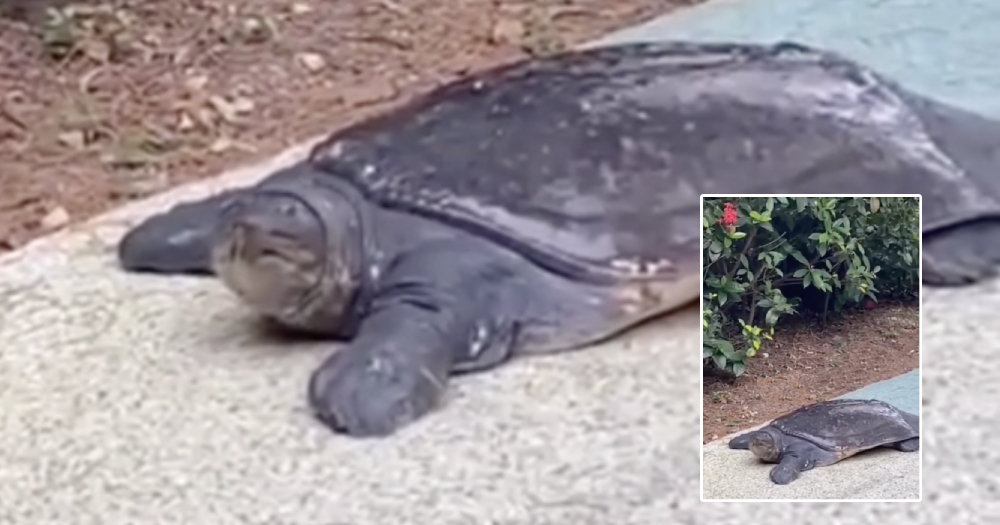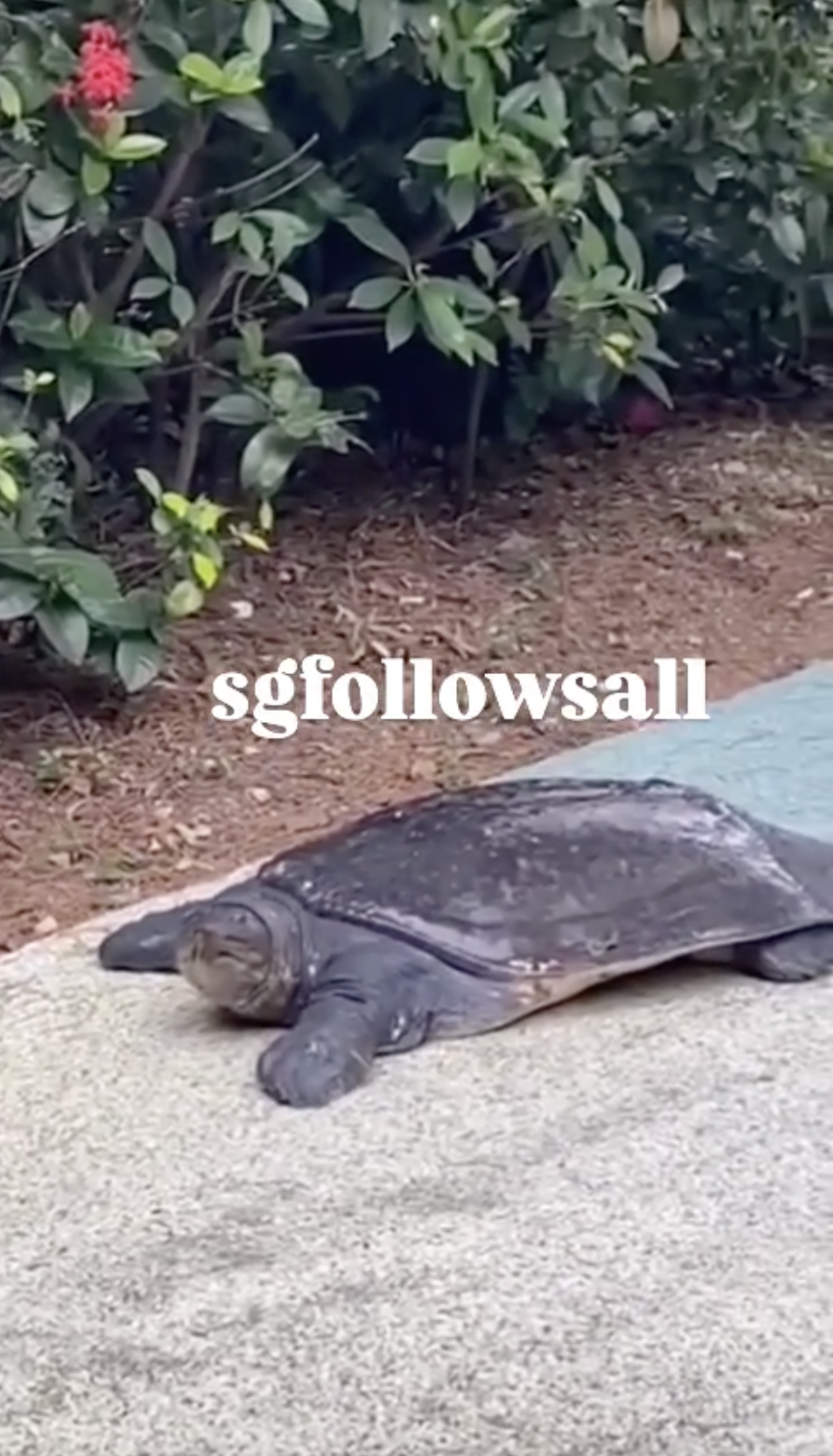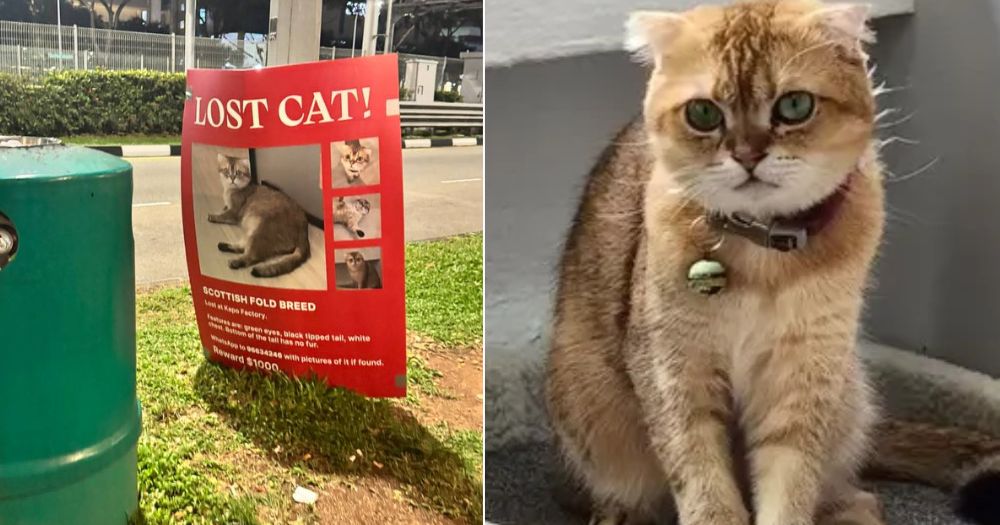Softshell turtle, likely a vulnerable species, wanders onto Jurong East footpath & gets removed by public
Under the Wildlife Act, it is an offence to keep and take any wildlife without the written approval of the director-general.

A softshell turtle, likely a vulnerable species, was spotted on a footpath in Jurong East on Aug. 24.
This was shared in a video posted to the "sgfollowsall" Instagram page the same day:
In the video, the large turtle had ventured onto the footpath beside some bushes.
It occasionally turned its neck as passersby walked past but barely moved an inch while on the path.
 Screenshot from sgfollowsall/Instagram.
Screenshot from sgfollowsall/Instagram.
Commenters opined that passersby should pour water on it to keep it moist, or hide it from predators.
One joked that it might end up as turtle soup.
It is not known how the turtle ended up in the area.
Member of public removed it: NParks
The National Parks Board (NParks) confirmed with Mothership that the turtle was sighted along Jurong East Street 24 on Aug. 24.
"Based on the video, the turtle appears to be an Asian Softshell Turtle (Amyda cartilaginea), which is a native species protected under the Wildlife Act 1965," said How Choon Beng, NParks' group director for wildlife management.
"It was later removed by a member of the public before the arrival of NParks," How added.
The NParks website lists the species as a vulnerable species under the third edition of the Singapore Red Data Book.
Offence to take wildlife without written approval: NParks
NParks stated that under the Wildlife Act, it is an offence to keep and take any wildlife without the written approval of the director-general.
In the case where the offence is committed in respect of a protected wildlife, those found guilty in court can be fined up to S$50,000, jailed for up to 2 years or both.
NParks is currently looking into the matter.
More about Asian softshell turtles
According to Ecology Asia, Asian softshell turtles are a freshwater species that mainly inhabits lowland streams in forested areas.
Their diet consists of insects, crustaceans, fish, vegetation and carrion and they can grow up to 75cm in shell length.
According to Animal Diversity Web, these turtles are consumed as food and on a smaller scale, used as pets.
Top image from sgfollowsall / Instagram

MORE STORIES





















